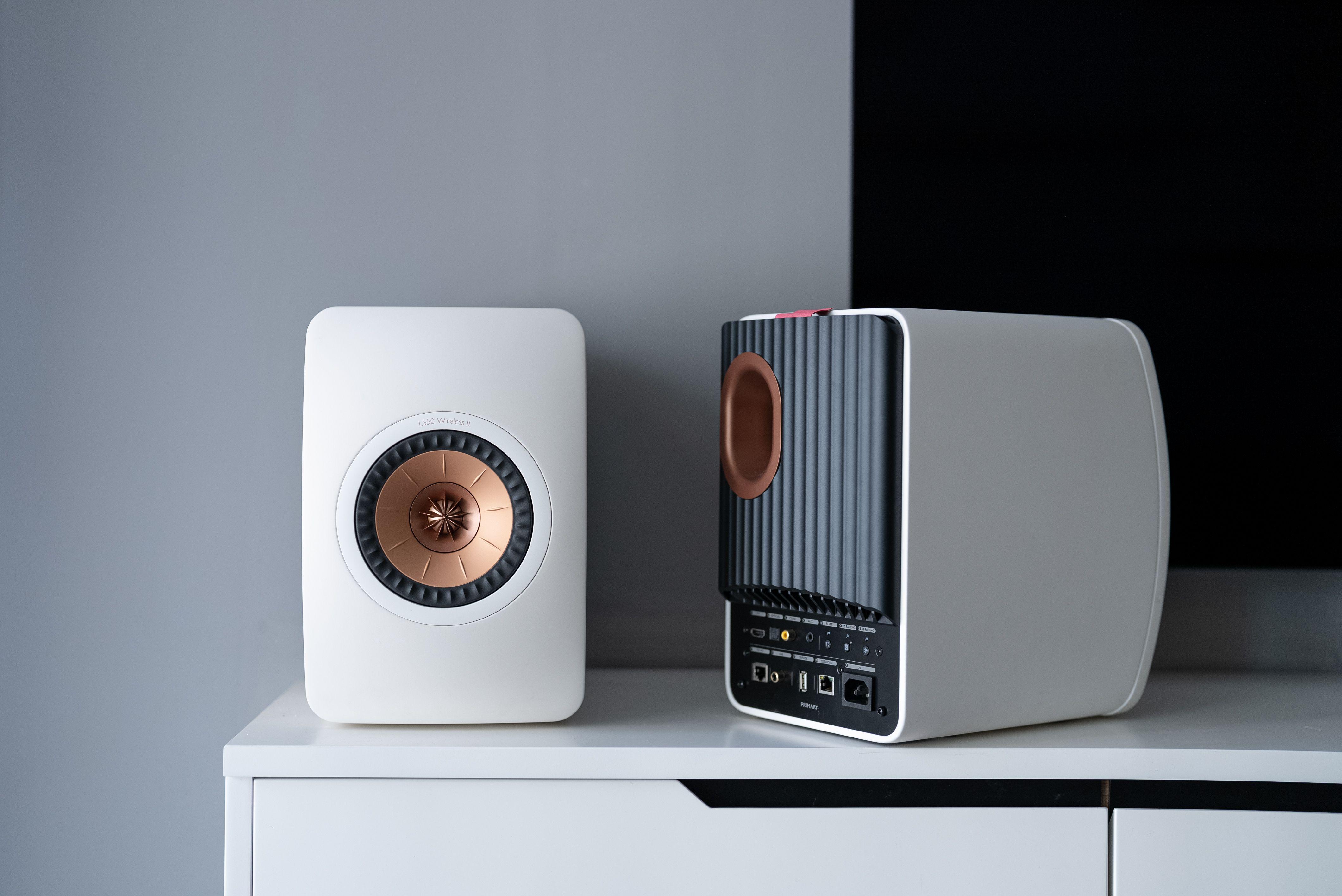
KEF LS50 Meta: An In-Depth Review of a Modern Classic Reimagined
Introduction: The Evolution of an Icon
Few loudspeakers in recent memory have achieved the iconic status of the original KEF LS50. Launched in 2012 to celebrate KEF's 50th anniversary, this compact monitor, inspired by the legendary LS3/5a, quickly became a benchmark for performance at its price point, lauded for its remarkable imaging, clarity, and surprisingly potent sound from a small enclosure. It garnered widespread acclaim and remained a top seller for nearly a decade, a testament to its enduring design. However, KEF, a company built on innovation, saw potential for refinement. In 2020, they introduced the LS50 Meta, a successor incorporating not just incremental improvements but a genuinely groundbreaking technology aimed at elevating the performance to a new level. Retaining the beloved form factor but promising enhanced sonic purity, the LS50 Meta arrived with considerable anticipation and has since collected numerous awards, cementing its position as a leader in its class. This review delves into the design, technology, and performance of the KEF LS50 Meta, examining whether it successfully builds upon its predecessor's legacy.
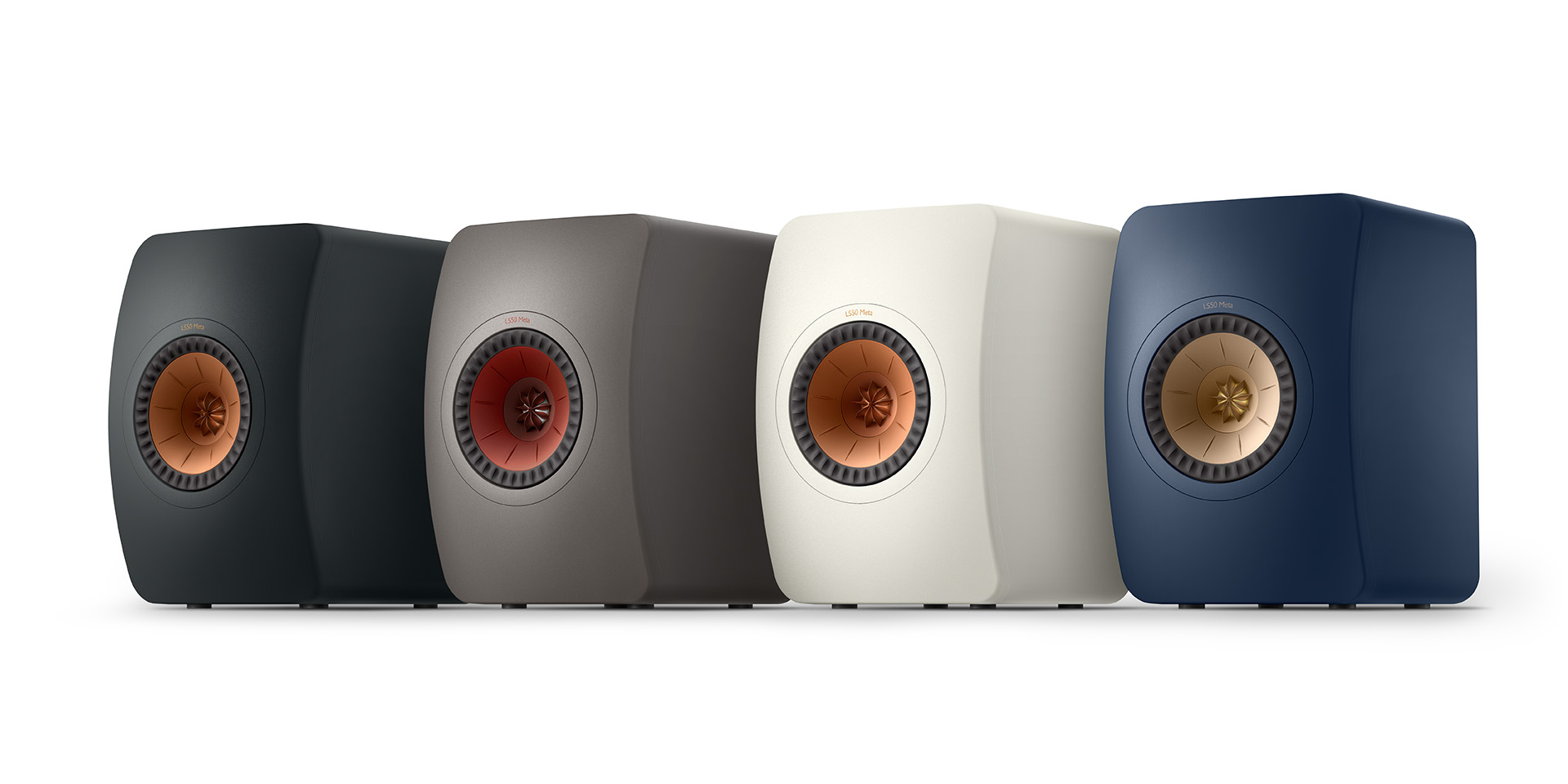
Design and Construction: Familiar Form, Refined Execution
Visually, the LS50 Meta remains strikingly similar to the original, a deliberate choice by KEF who concluded that the fundamental cabinet design needed little improvement. It retains the compact dimensions (approximately 30.2 x 20 x 28 cm, HWD) and reassuring weight (around 7.8 kg). The enclosure is primarily constructed from MDF, heavily braced and damped internally to minimize resonances – a fact confirmed by technical measurements showing an effectively inert cabinet.
The most distinctive visual element remains the convex front baffle, crafted from a Dough Moulding Compound (DMC) – a polyester resin blended with glass fibre and calcium carbonate. This curved, dense structure is not merely aesthetic; it provides an exceptionally rigid and well-controlled foundation for the Uni-Q driver array while minimizing diffraction effects that can compromise soundstaging and imaging. The baffle's smooth, continuous surface and softly rounded edges contribute significantly to the speaker's ability to create a precise sonic image.
Subtle refinements distinguish the Meta from the original. The gloss finish of the LS50 gives way to elegant matte options: Carbon Black, Mineral White, Titanium Grey, and a Royal Blue Special Edition. The rear panel has been tidied up, with fixing holes removed and cosmetic detailing added for a cleaner look. The reflex port, crucial for bass reinforcement, is offset in the upper corner and features an elliptical or "racetrack" shape with a flexible central section, designed to reduce midrange coloration and port turbulence at high levels. High-quality binding posts are provided for speaker cable connection. Overall build quality is exemplary, feeling robust and premium, justifying the speaker's price point. Notably, grilles are not typically supplied nor needed for protection, as the driver design incorporates protective elements, allowing the striking Uni-Q driver to remain visible.
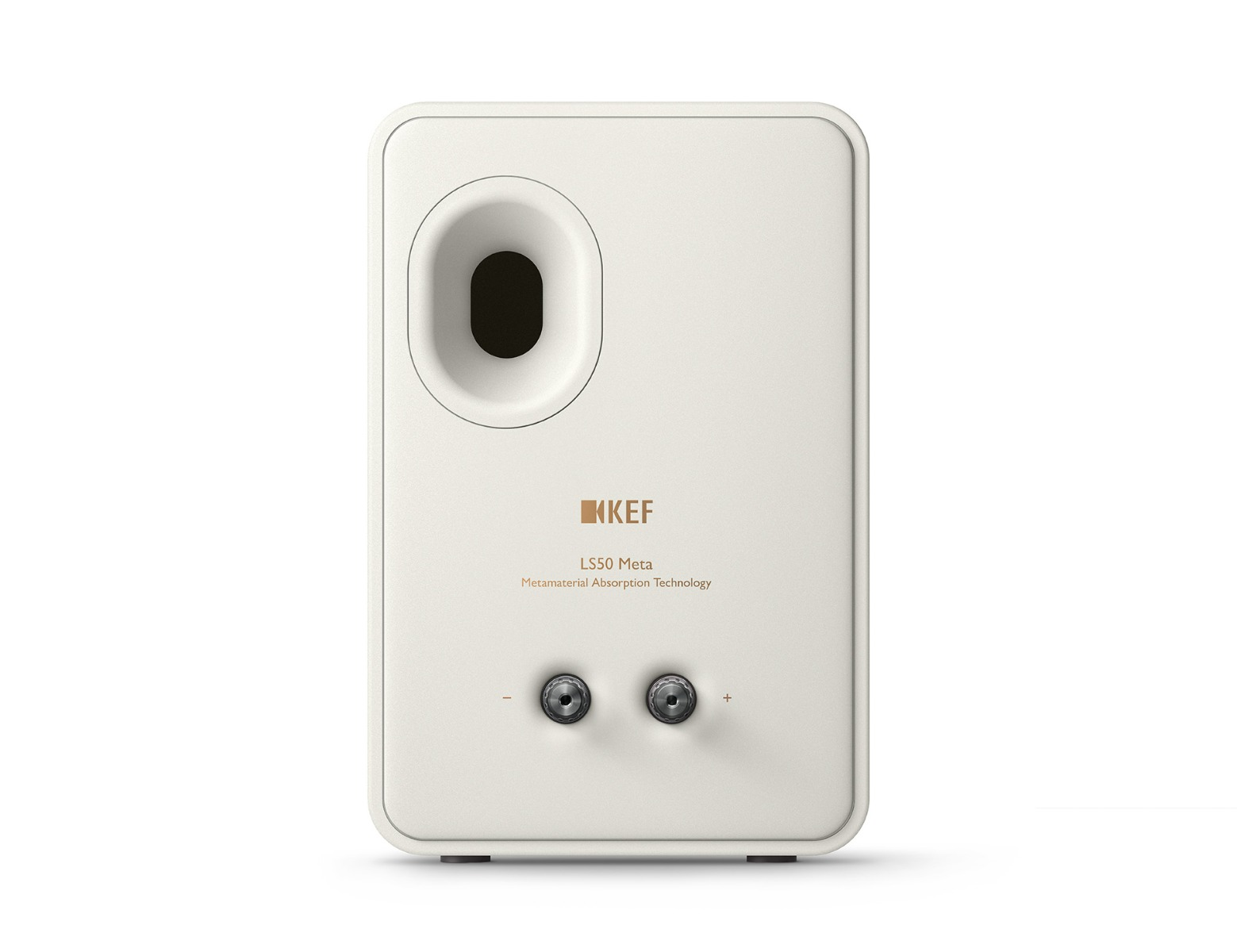
Technology Focus: The Synergy of Uni-Q and MAT
The heart of the LS50 Meta lies in its advanced driver technology, combining KEF's signature Uni-Q array with the revolutionary Metamaterial Absorption Technology (MAT).
Uni-Q Driver Array: The Quest for Point-Source Coherence
KEF has championed its Uni-Q driver concept for decades. This technology places the tweeter concentrically within the acoustic centre of the midrange/bass driver cone, effectively creating a single point source for sound radiation across a wide frequency range. The LS50 Meta employs the 12th generation of this array, featuring a 25mm (1 in.) vented aluminium dome tweeter nestled within a 130mm (5.25 in.) aluminium cone mid/bass driver.
The theoretical benefit of this coincident arrangement is superior time alignment and dispersion characteristics compared to conventional speakers with separate drivers. Sound emanates from a single point, leading to more precise imaging, a wider and more consistent listening area ("sweet spot"), and reduced interference between drivers, particularly around the crossover region. KEF claims the driver diaphragms are shaped to push resonance modes far outside their operating bandwidths, with tweeter breakup occurring above 40kHz. The 12th generation Uni-Q in the Meta incorporates refinements developed over eight years, including a new cone neck decoupler, an optimized motor system, and the 'tweeter gap dampener' first seen in the R Series, all aimed at enhancing clarity, reducing coloration, and optimizing dispersion. The crossover frequency between the tweeter and mid/bass driver is set at 2.1kHz.
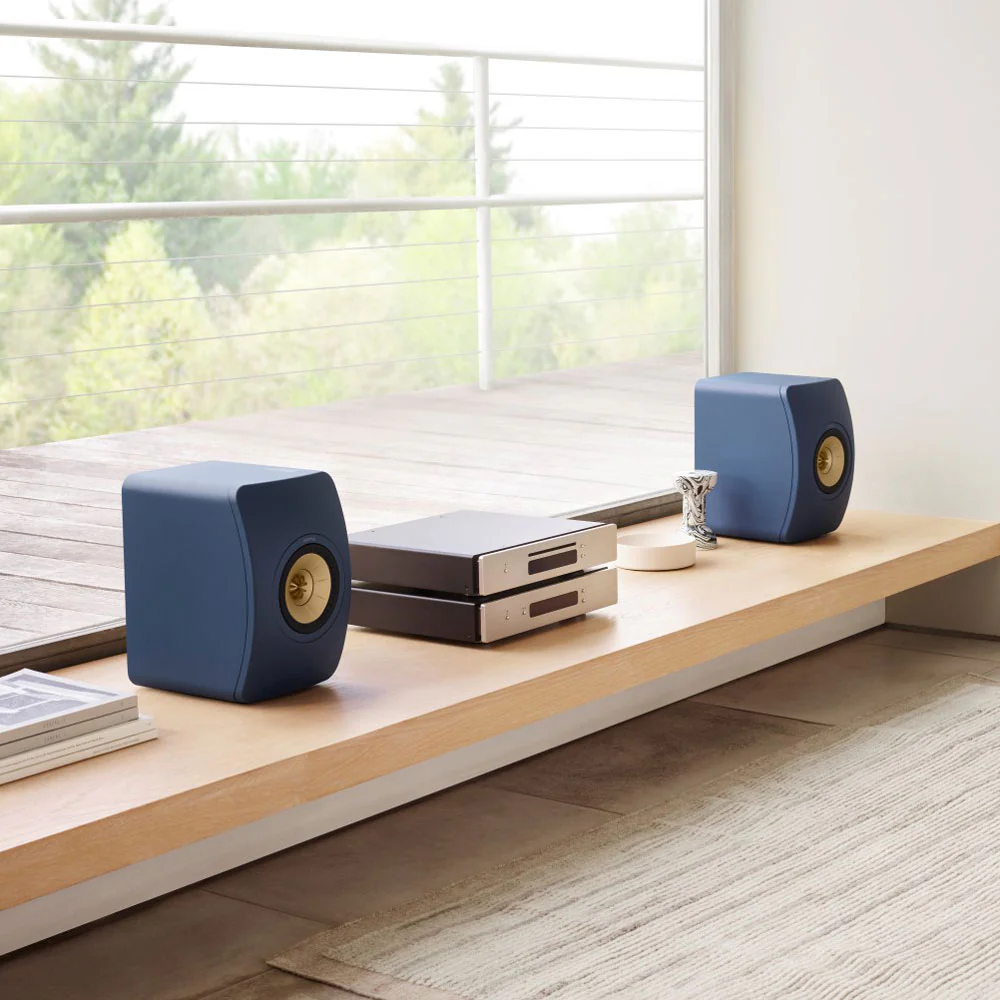
Metamaterial Absorption Technology (MAT): Taming the Backwave
The defining innovation of the LS50 Meta is the introduction of Metamaterial Absorption Technology (MAT). Developed in collaboration with the Acoustic Metamaterials Group (AMG), MAT addresses a persistent challenge in loudspeaker design: the unwanted sound energy radiating from the rear of the tweeter dome. In conventional designs, this backwave can reflect internally and interfere with the forward-radiating sound, causing distortion and coloration.
MAT takes the form of a complex, maze-like disc, approximately 3 inches in diameter, mounted behind the Uni-Q driver's motor structure. This disc contains intricate channels, each precisely engineered to act as a narrow-band Helmholtz resonator, effectively absorbing specific frequencies. KEF states that this structure, optimized using Finite Element Analysis, absorbs an unprecedented 99% of the unwanted rearward sound from 600Hz upwards. This absorption is claimed to be far more effective than traditional damping materials, which might only absorb around 60%.
The audible result of MAT is a significant reduction in high-frequency distortion and resonance. This translates directly to the widely reported improvements in the LS50 Meta's performance: cleaner, purer, and more natural-sounding treble; enhanced clarity and detail retrieval; and a greater sense of sonic transparency. By effectively creating an "acoustic black hole" behind the tweeter, MAT allows the listener to hear more of the direct sound from the driver, unblemished by internal reflections. This technology was recognized with a What Hi-Fi? Innovation of the Year award in 2020 and has subsequently been implemented in KEF's higher-end R Meta and Reference Meta series.
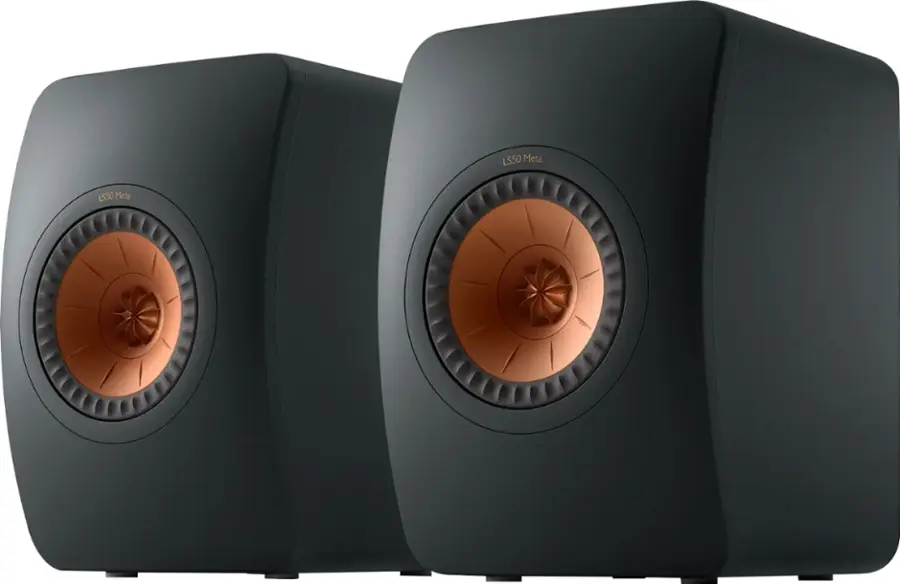
Key Specifications
Understanding the technical specifications provides context for the LS50 Meta's performance characteristics:
- Model: LS50 Meta
- Design: Two-way bass reflex
- Drive Unit: 12th Gen Uni-Q with MAT:
HF: 25 mm (1 in.) vented aluminium dome with Metamaterial Absorption Technology 6
MF/LF: 130 mm (5.25 in.) aluminium cone - Crossover Frequency: 2.1 kHz
- Frequency Range (-6dB): 47 Hz - 45 kHz
- Typical In-Room Bass Response (-6dB): 26 Hz (This likely relies heavily on room gain)
- Frequency Response (±3dB): 79 Hz - 28 kHz
- Sensitivity (2.83V/1m): 85dB
- Nominal Impedance: 8 Ω
- Minimum Impedance: 3.5 Ω 6 (Some sources cite 3.2 Ω 8 or 3.7 Ω 18)
- Recommended Amplifier Power: 40-100 W
- Maximum Output: 106 dB
- Harmonic Distortion (90dB, 1m): <0.4% (175 Hz - 20 kHz), <0.1% (300 Hz - 10 kHz)
- Dimensions (H x W x D with Terminal): 302 x 200 x 280.5 mm (11.9 x 7.9 x 11.0 in)
- Weight: 7.8 kg (17.2 lbs) per speaker
The specifications reveal several key points. The frequency response (±3dB) starting at 79Hz confirms the limited deep bass extension inherent in the design.The sensitivity of 85dB is relatively low, and combined with the minimum impedance dipping below 4 ohms, indicates that the LS50 Meta requires an amplifier with good current delivery to perform optimally.7 While KEF recommends 40-100W, many reviewers suggest that more robust amplification truly allows the speakers to shine.
Listening Impressions: Transparency and Precision Personified
Synthesizing listening tests from numerous expert reviews reveals a consistent picture of the LS50 Meta's sonic character. While instantly recognizable as belonging to the LS50 family, the Meta iteration offers a distinct step up in refinement and clarity.
Overall Character and Tonal Balance
The LS50 Meta is consistently described as exceptionally transparent, neutral, and revealing. The MAT technology plays a significant role here, contributing to a cleaner window into the recording. Compared to the original LS50, the Meta sounds less colored, more natural, and significantly more refined, particularly in the treble. Some listeners perceive a slight warmth or smoothness, preventing the speaker from sounding analytical or harsh, despite its high resolution. It offers a balance and substance typically associated with more expensive designs. The speaker demonstrates impressive coherence across different musical genres, handling everything from intricate classical pieces and delicate vocals to dynamic rock and electronic music with poise.
Soundstage and Imaging
A hallmark of the Uni-Q driver, and further enhanced in the Meta, is its imaging capability. Reviewers praise the LS50 Meta for creating a precise, stable, and sharply focused soundstage. Instruments and voices are locked firmly in place within a three-dimensional acoustic space. The center image is particularly strong, bringing vocalists forward with startling realism. The speakers have an excellent ability to "disappear," leaving just the music. While width is generally good, some listeners have noted that the soundstage height might feel somewhat constrained compared to larger speakers or different designs like open baffles. The controlled dispersion pattern helps maintain image focus even slightly off-axis.
Midrange and Treble Performance
The midrange is arguably where the LS50 Meta shines brightest. Vocals, in particular, are rendered with exceptional clarity, articulation, and naturalness, sounding intimate and present. The speaker reveals texture and nuance in voices and instruments without artificial emphasis. The treble benefits immensely from the MAT technology. The "sizzle" or slight exuberance sometimes noted in the original LS50's highs is gone, replaced by a presentation that is smooth, clean, extended, and remarkably free from distortion or harshness. Cymbals decay naturally, and high-frequency details emerge effortlessly without drawing undue attention. This refinement contributes significantly to the speaker's non-fatiguing character, allowing for long listening sessions.
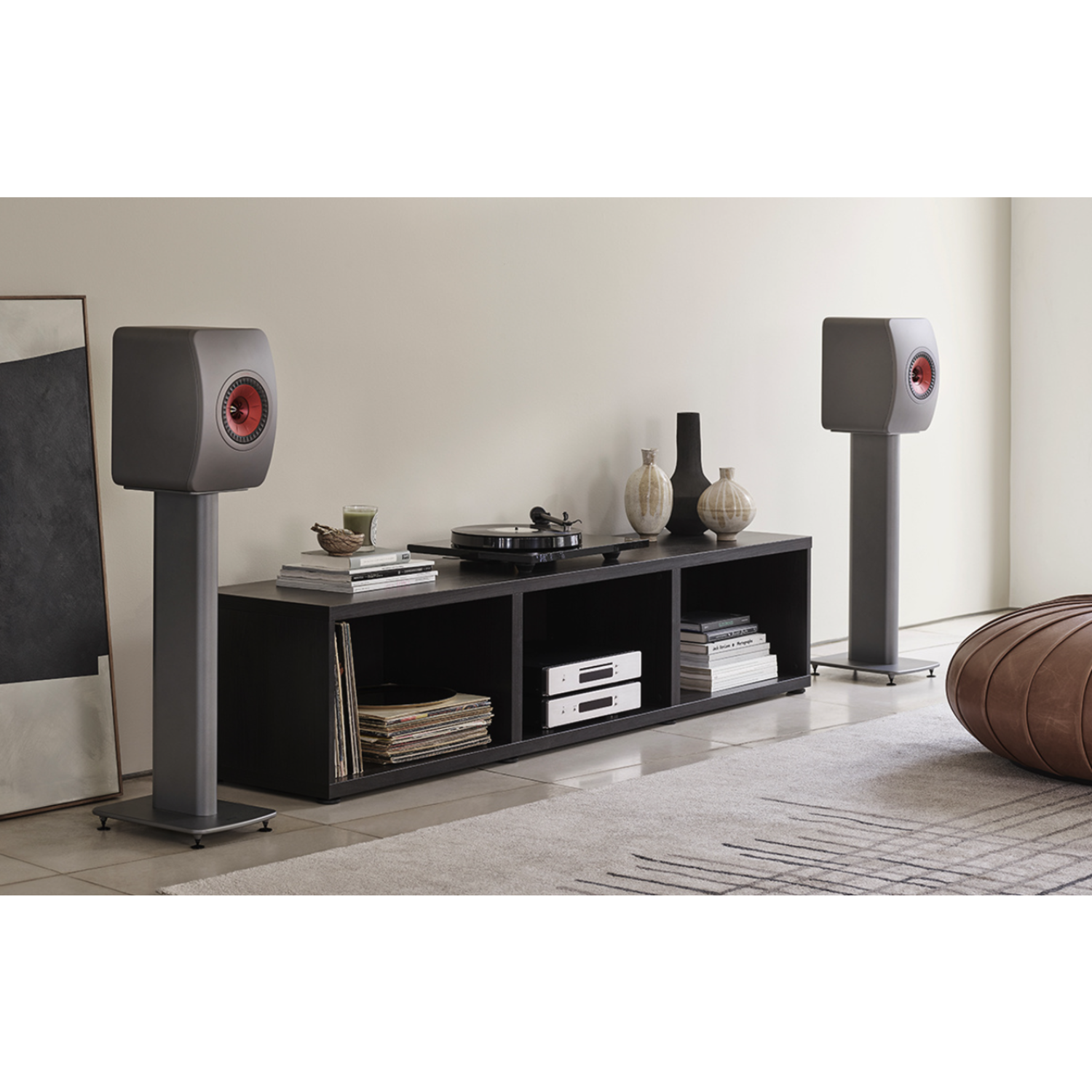
Bass Performance and Dynamics
For a compact speaker with a 5.25-inch mid/bass driver, the LS50 Meta delivers surprisingly impactful and articulate bass. Mid-bass is punchy and well-defined, contributing to the speaker's engaging and rhythmic presentation. However, deep bass extension is fundamentally limited by the physics of its size and design. While usable bass reaches down towards 50Hz in-room, aided by room gain, frequencies below this roll off significantly. This limitation is the most frequently cited drawback, leading to the strong recommendation for subwoofer integration. Dynamically, the LS50 Meta performs well within its limits. Micro-dynamic contrasts and low-level details are resolved effectively, adding to the sense of realism. Macro-dynamics are lively and engaging, especially in the midrange and treble. However, when pushed to very high volumes, particularly with bass-heavy music, the speaker can exhibit signs of compression and lose some composure, especially in the lower frequencies.
Setup and System Matching: Unlocking the Potential
To achieve the performance levels described, careful attention must be paid to system matching and setup.
Amplification Requirements
The LS50 Meta, with its 85dB sensitivity and impedance dipping to 3.5 ohms (or slightly lower according to some measurements), presents a moderately challenging load for amplifiers. While KEF suggests a minimum of 40W, reviewers consistently emphasize the need for high-quality amplification with ample power reserves and good current delivery to truly make the speakers "sing". Underpowered or low-quality amplifiers may result in a constrained sound, lacking dynamics and control. Successful pairings mentioned in reviews include amplifiers from NAD, Hegel, Chord Electronics, Benchmark, CODA, and Krell, suggesting that investing in capable amplification is crucial.
Placement and Room Interaction
Proper placement is vital for optimizing the LS50 Meta's performance. Mounting them on rigid, dedicated stands is strongly recommended to position the Uni-Q driver at ear height and provide stability. KEF offers the matching S2 Floor Stand (£400/€450/US$449), considered both a visual and sonic match, providing the right balance of mass and decoupling. Due to the rear-firing reflex port, distance from the rear wall significantly impacts bass response. Placing them too close can lead to boomy or overly thick bass. If placement near a wall is unavoidable, KEF includes foam port bungs that can be inserted to attenuate bass output, allowing for more placement flexibility. The speakers are best suited for small to medium-sized rooms. While their controlled dispersion may make them slightly less sensitive to room acoustics than some wider-dispersion designs, basic room treatments (like rugs, curtains, or dedicated acoustic panels) can still yield audible benefits, particularly in managing reflections and enhancing image clarity. The LS50 Meta is also frequently used in nearfield or desktop setups, although some find its size slightly large for this application.
The Subwoofer Question: Necessity or Enhancement?
The discussion around the LS50 Meta invariably leads to subwoofers. The overwhelming consensus across numerous reviews and user experiences is that while the LS50 Meta produces commendable bass for its size, adding one or more quality subwoofers is highly recommended, if not essential, for achieving truly full-range performance and unlocking the speaker's full potential. This isn't necessarily a criticism of the LS50 Meta's design, but rather an acknowledgment of the physical limitations of extracting deep bass from a compact 5.25-inch driver in a small enclosure. The speaker's design clearly prioritizes midrange and treble purity, leveraging the Uni-Q driver and MAT. By offloading the demanding deep bass frequencies (typically below 60-80Hz) to a dedicated subwoofer, the LS50 Meta's mid/bass driver is freed from large excursions, potentially leading to reduced distortion, improved dynamics, and even greater clarity in the critical midrange frequencies. Recommended subwoofer pairings mentioned include the KEF KC62, REL T7/T7i, Rythmik Audio models, SVS SB1000 Pro, and Buchardt Sub10. Proper integration (setting crossover points, phase, and level) is crucial but can be challenging. When successfully integrated, the LS50 Meta transforms from an excellent monitor into a formidable, full-range system that can compete with much larger speakers. Viewing the LS50 Meta as a high-performance satellite speaker designed to be complemented by a subwoofer may be the most accurate way to understand its place in a high-fidelity system.
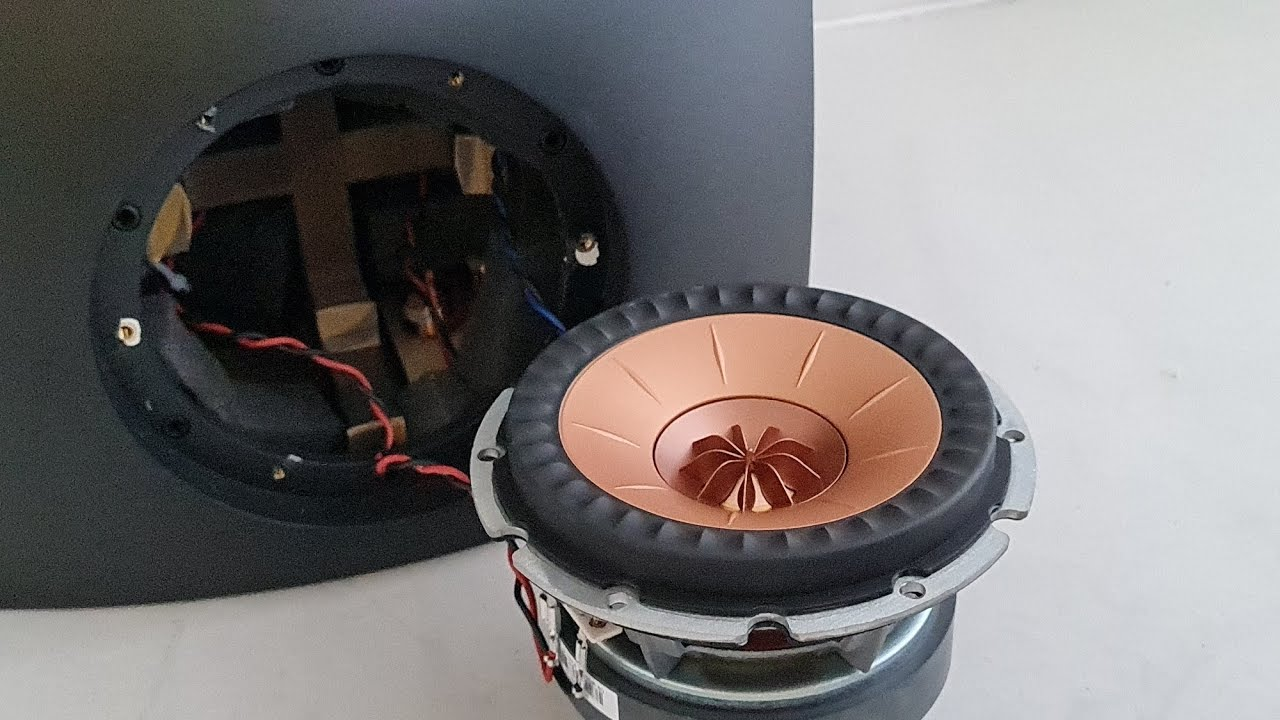
Comparisons: Context and Alternatives
Evaluating the LS50 Meta requires placing it in context with its predecessor, its active sibling, and other competitors in the market.
LS50 Meta vs. Original LS50
The comparison most frequently made is against the original LS50. Reviewers are unanimous: the LS50 Meta represents a significant and clearly audible improvement. While the fundamental sonic signature is familiar, the Meta version offers enhanced clarity, transparency, and refinement. The MAT technology is credited with cleaning up the treble, removing any hint of "sizzle" or harshness, and allowing more midrange detail to emerge. Measurements confirm a flatter frequency response and cleaner decay characteristics in the Meta. It's considered a truly worthy upgrade that takes the performance to a "notably higher level".
LS50 Meta vs. LS50 Wireless II
The LS50 Wireless II is essentially an active, all-in-one system version of the LS50 Meta. It uses the same 12th Gen Uni-Q driver with MAT but incorporates dedicated internal amplifiers (280W Class D for the mid/woofer, 100W Class A/B for the tweeter) and sophisticated Digital Signal Processing (DSP) for the crossover and response optimization. This DSP allows KEF to claim deeper bass extension (down to 40Hz vs. 47Hz for the passive Meta, -6dB). The Wireless II offers extensive connectivity, including HDMI ARC, Wi-Fi streaming (Roon Ready, AirPlay 2, Chromecast, Spotify Connect), and Bluetooth, making it a convenient solution. The choice between them depends on user priorities. The Wireless II offers optimized amplification and DSP benefits, plus convenience, potentially providing superior performance out of the box. However, the passive LS50 Meta offers greater flexibility in choosing partnering amplification and source components, appealing to traditional audiophiles who prefer separate components or have existing high-quality gear. Some reviews suggest the passive Meta, when paired with excellent amplification, closes the performance gap significantly compared to the original LS50 vs. LS50 Wireless matchup.
LS50 Meta vs. KEF R3 Meta
Moving up KEF's passive line brings the R3 Meta, a larger, three-way standmount speaker that also incorporates MAT. As expected, the R3 Meta offers greater bass extension and potentially a larger sense of scale due to its dedicated bass driver and larger cabinet volume. However, comparisons reveal differing subjective opinions: some find the R3 Meta sounds slightly "darker" or less immediately revealing in the mids compared to the laser-like focus of the LS50 Meta, while others perceive a shared family sound signature, with the R3 simply adding scale. The price difference is also substantial, placing the R3 Meta in a higher tier.
LS50 Meta vs. Other Competitors
In its price range (around $1600/pair), the LS50 Meta faces competition from various designs.
Buchardt S400 MkII: Often compared, the Buchardt is described as having a warmer, smoother presentation with more inherent bass weight, whereas the LS50 Meta offers greater projection and soundstage precision.
PMC Prodigy 1: Utilizes a transmission line for bass loading, noted for its speed and fluency, contrasting with the LS50 Meta's greater low-end heft but potentially less dexterity.
Other Standmounts and Floorstanders: Competitors like the Dali Oberon 5, Monitor Audio Bronze 500, Wharfedale Linton, Audiovector QR 1, GoldenEar BRX, Magnepan LRS+, Vandersteen 1Ci, and MoFi SourcePoint 8 offer different approaches, including floorstanding designs with deeper bass, ribbon tweeters, or different tonal balances (e.g., warmer, more romantic).
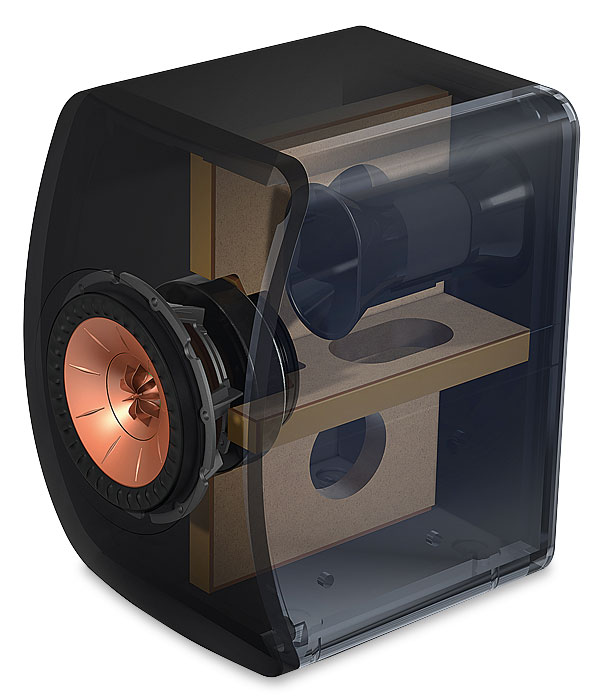
These comparisons highlight the LS50 Meta's specific market position. It appeals strongly to listeners who prioritize state-of-the-art transparency, pinpoint imaging, and midrange/treble refinement within a compact, beautifully engineered package. Its primary trade-off is deep bass extension, a factor potential buyers must weigh against alternatives that might offer more low-end authority but potentially compromise in areas where the KEF excels. The decision often hinges on prioritizing the Meta's unique strengths and the willingness to potentially integrate a subwoofer.
Analysis: Pros and Cons Synthesized
Based on the collective insights from numerous reviews, the strengths and weaknesses of the KEF LS50 Meta can be summarized as follows:
Pros:
- Exceptional Sonic Transparency and Clarity: Delivers a highly detailed, clear, and revealing sound, significantly enhanced by MAT.
- Precise and Stable Imaging/Soundstaging: Creates a holographic, focused, three-dimensional soundstage with superb localization.
- Superb Midrange Reproduction: Offers natural, articulate, and engaging midrange performance, particularly excelling with vocals.
- Refined and Clean Treble: Smooth, extended, and detailed high frequencies without harshness or fatigue, thanks to MAT's distortion reduction.
- Innovative Technology (MAT): Metamaterial Absorption Technology represents a genuine engineering advancement with clearly audible benefits.
- Excellent Build Quality and Aesthetics: Features high-quality materials, flawless finishes, and an iconic, visually appealing design.
- Musically Versatile: Performs coherently and engagingly across a wide range of musical genres.
- Significant Improvement Over Original LS50: Universally regarded as a clear and worthwhile upgrade to its predecessor.
Cons:
- Limited Deep Bass Extension: The most significant limitation; requires careful placement and, ideally, subwoofer integration for full-range reproduction.
- Requires Quality Amplification: The moderate sensitivity and challenging impedance load demand a capable, high-current amplifier to achieve optimal performance.
- Potential for Sounding "Sterile" or "Analytical" to Some: Its high degree of neutrality and transparency might not appeal to listeners preferring a warmer or more romantic sound signature.
- Soundstage Dimensionality Limitations: While imaging is precise, some listeners note constraints in overall soundstage height or scale compared to larger or different speaker types.
- Dynamic Compression at Extreme Levels: Can exhibit limitations in dynamic impact and composure when pushed to very high volumes, particularly in the bass region.
- Price Point Considerations: While offering strong value, it represents a considerable investment, and minor details like binding posts could arguably be more substantial for the cost.
Conclusion: The Meta Evolution - A Triumph of Refinement
The KEF LS50 Meta stands as a resounding success, expertly evolving an already iconic loudspeaker design. It masterfully retains the core virtues of the original – the compact form, the stunning aesthetics, and the point-source magic of the Uni-Q driver – while significantly elevating the sonic performance through thoughtful engineering and the genuinely innovative application of Metamaterial Absorption Technology.
The integration of MAT is not mere marketing; it delivers tangible improvements, resulting in a level of clarity, transparency, and refinement, particularly through the midrange and treble, that is exceptional for a speaker at this price point. The LS50 Meta paints a precise, stable, and deeply involving soundstage, rendering vocals and instruments with remarkable naturalness and detail. Its ability to simply get out of the way of the music is captivating.
However, potential owners must understand its design philosophy. As a compact monitor, deep bass extension is inherently limited. Achieving a truly full-range, deeply satisfying experience, especially in medium-sized rooms or with bass-rich music, necessitates pairing the LS50 Meta with a quality amplifier possessing ample current reserves and, crucially, integrating one or more capable subwoofers. When implemented as part of such a system, the LS50 Meta transcends its size limitations, performing as a world-class satellite.
Positioned as a leader in its category, the LS50 Meta offers a compelling value proposition, delivering a significant slice of high-end audio performance and cutting-edge technology at a price that remains accessible compared to esoteric alternatives. It represents "affordable almost perfection" within its design constraints and serves as an "authentic introduction to high fidelity sound".
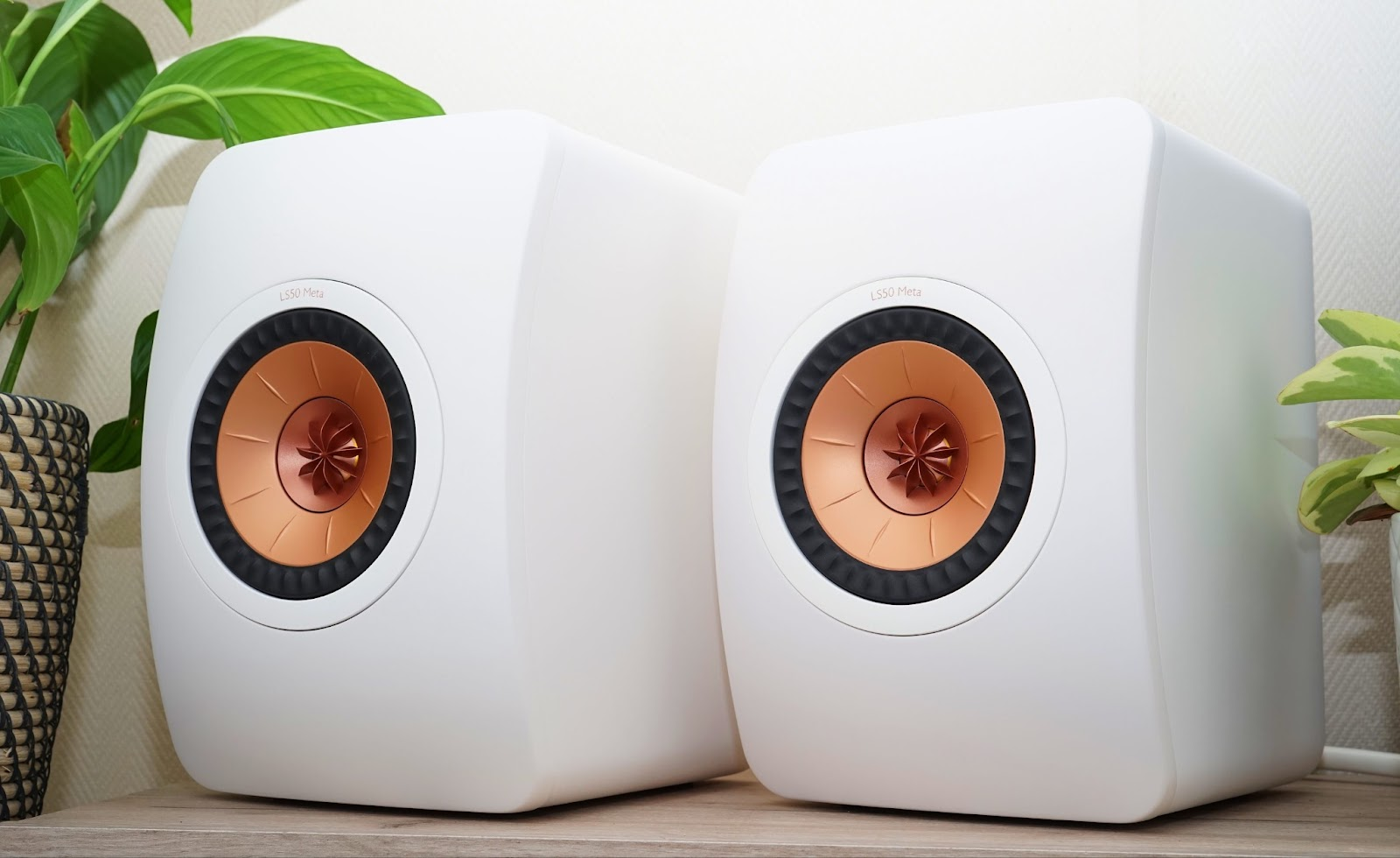
The KEF LS50 Meta is ideally suited for the discerning audiophile with a small to medium-sized listening space who prioritizes accuracy, breathtaking imaging, and sonic purity above sheer bass depth or ultimate volume levels. For those willing to invest in appropriate system matching, particularly subwoofer integration, the LS50 Meta offers a profoundly rewarding listening experience. It is more than just an update; it is a masterful refinement that successfully addresses past critiques while enhancing core virtues, solidifying its status as a benchmark compact loudspeaker for a new generation.

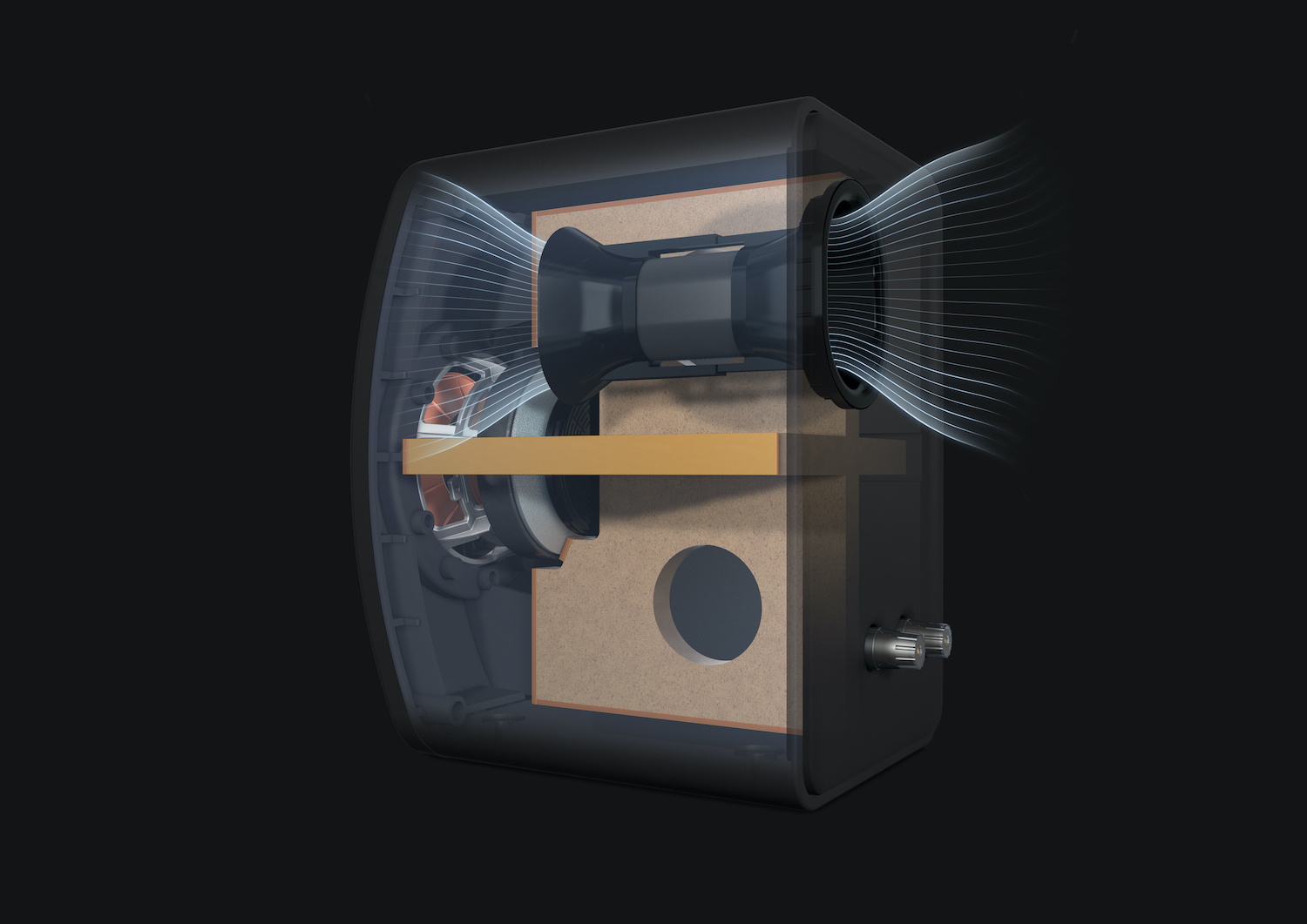

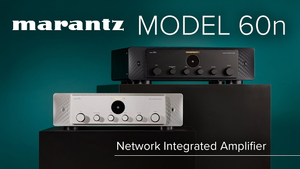
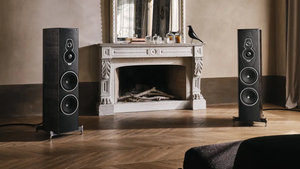


Comments